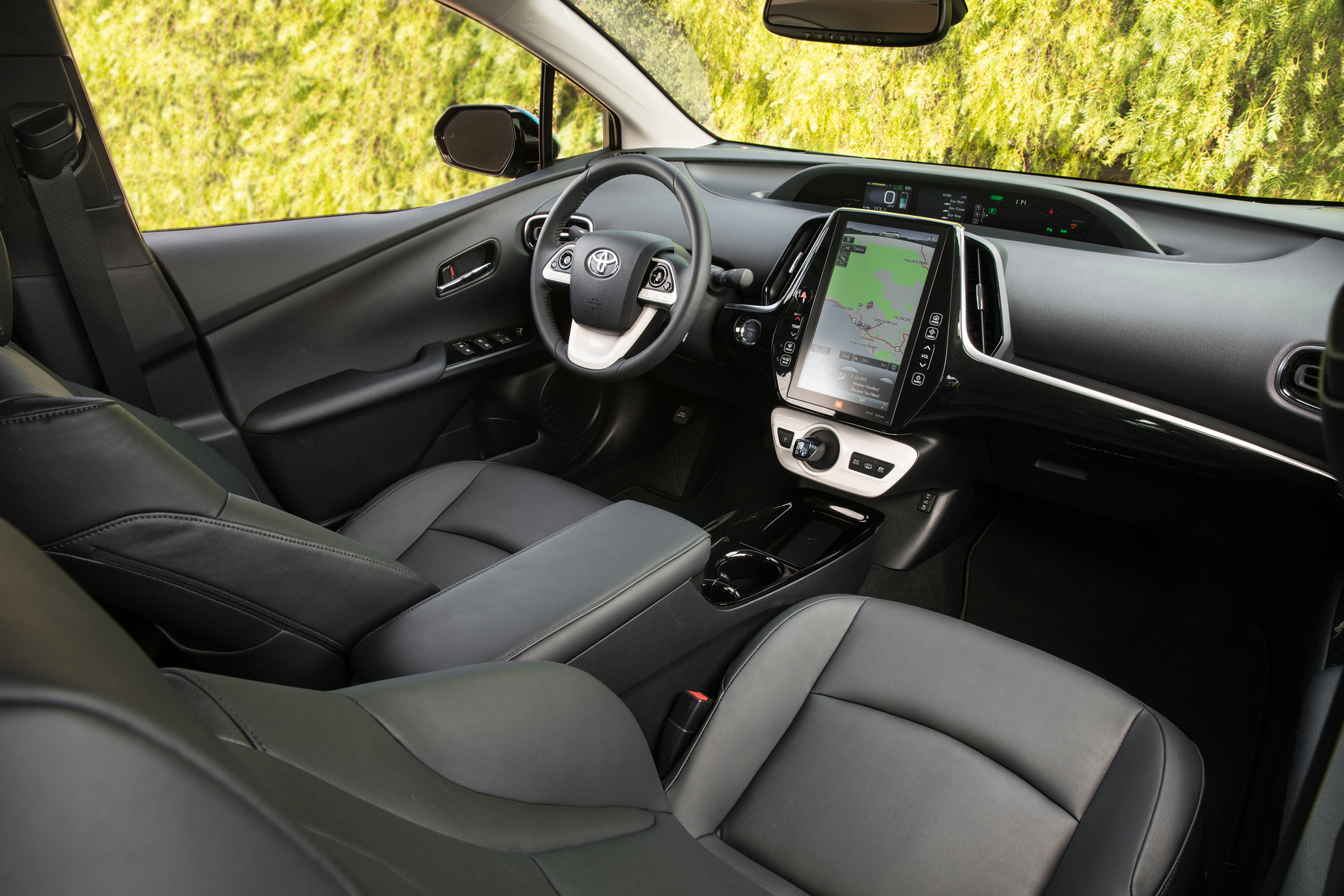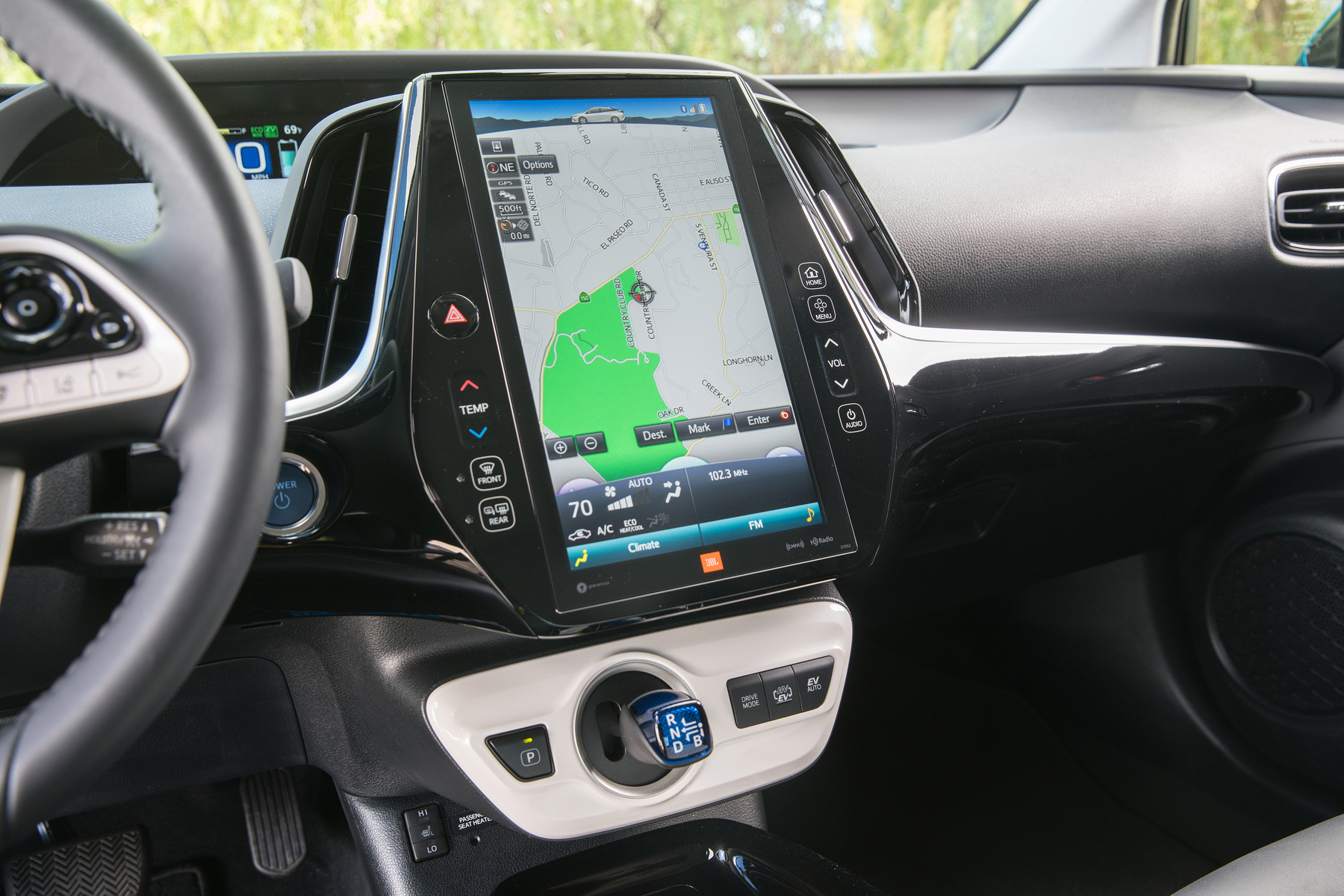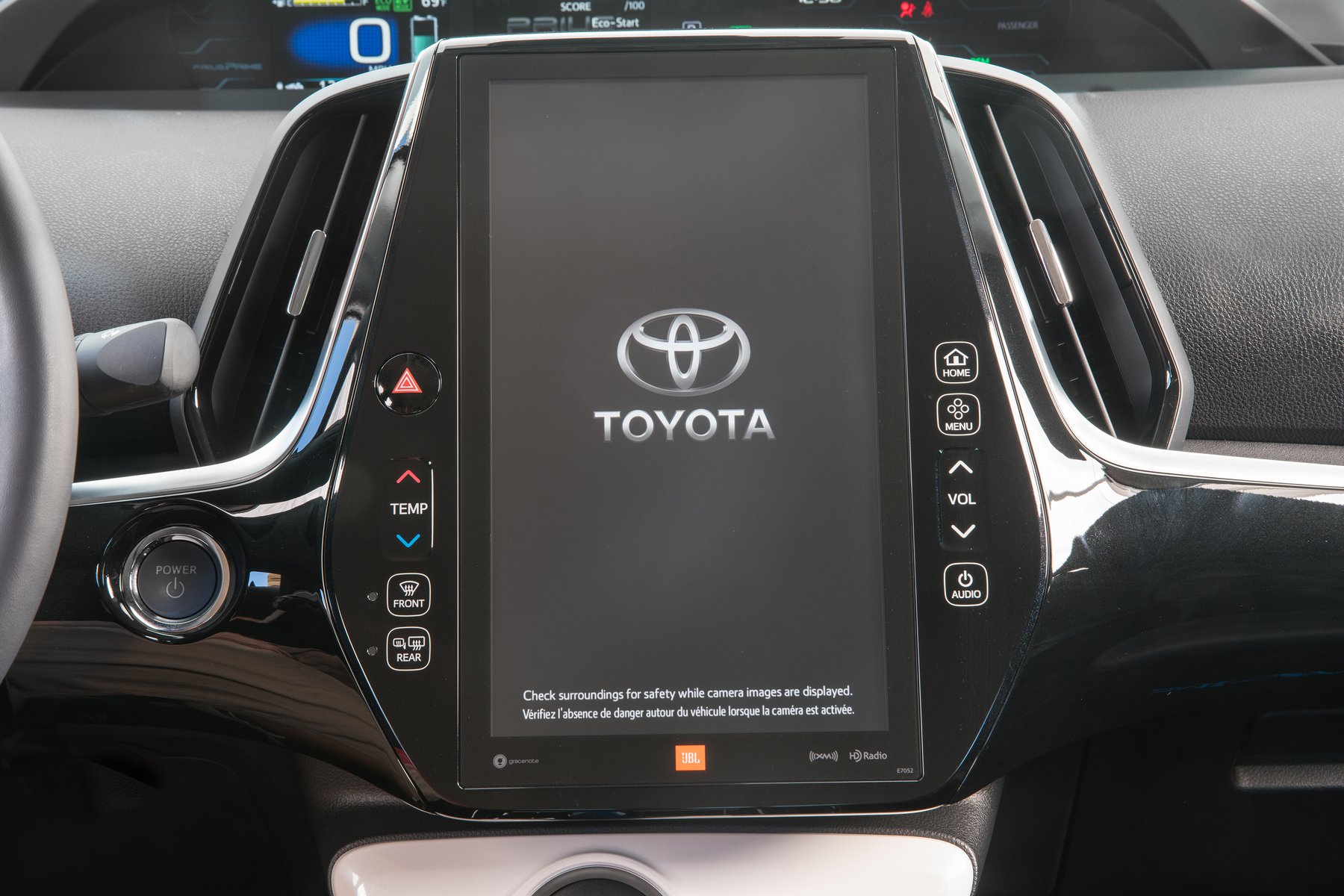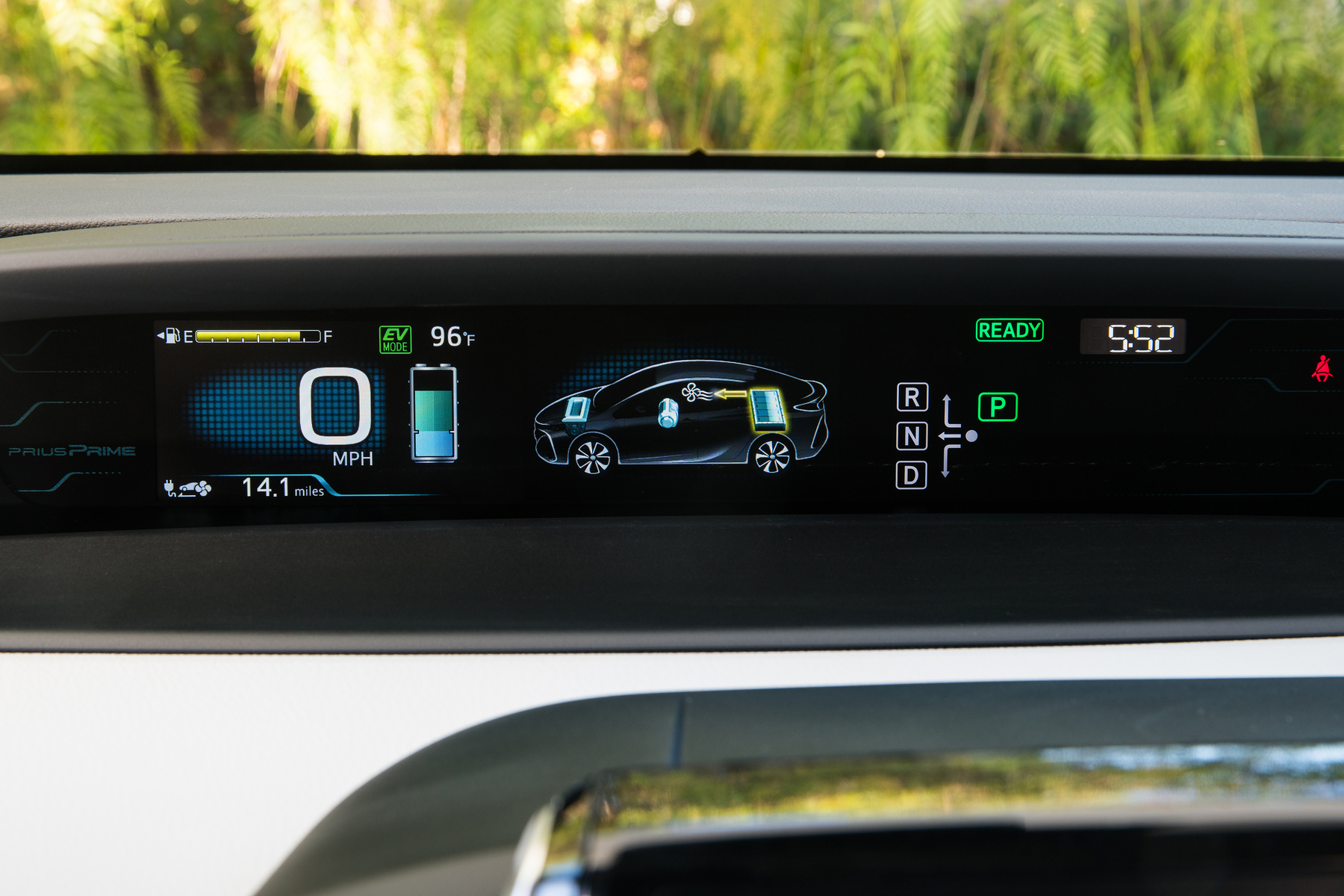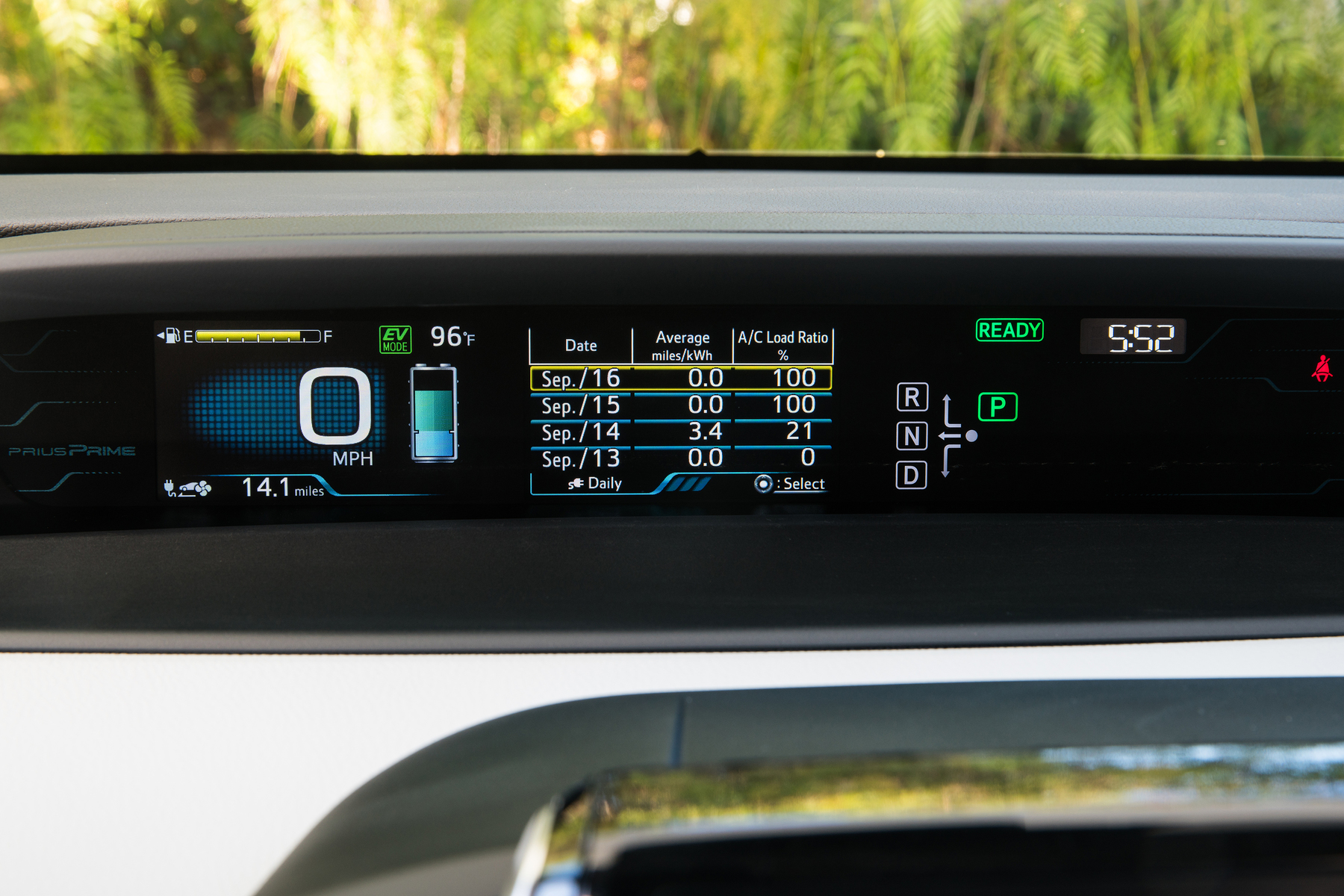The Toyota Prius was a daring proposition when it debuted in Japan in 1997. At the time, most motorists had never heard of a hybrid car. 20 years and four generations later, the Prius has become a common part of the automotive landscape, and it’s recognized as one of the most efficient cars on the planet by cabbies, yuppies, and everyone in between.
The plug-in variant of the world’s favorite hybrid has morphed into a standalone model named Prime in order to fend off growing competition in Japan and abroad. From its range, its specs, and its price, here’s everything you need to know about the most efficient Prius ever.
A unique face
For the first time, the plug-in hybrid variant of the Prius stands out from the regular hybrid model with a specific design. It’s still instantly recognizable as a member of the Prius family; by that we mean it’s still quirky. You’ll love it or you’ll hate it, but it’s hard to remain indifferent when you’re driving behind it.
The front end gets long, thin headlights that stretch well into the fenders and a rounded nose with a black insert. Blacked-out C-pillars create the illusion of a floating roof, a design cue that’s becoming increasingly popular in the automotive world. Out back, there are sharp headlights connected by a thin light bar and a piece of dual-wave glass on the hatch. The Prime proudly screams, “Hey, I’m a hybrid!” louder than any Prius before it.
The Prime stretches 182.9 inches long, 69.3 inches wide, and 57.9 inches tall. It offers 19.8 cubic feet of trunk space, but seating is limited to just four passengers.
Under the hood

The Prius Prime is equipped with a gasoline-electric plug-in hybrid drivetrain built around a naturally-aspirated 1.8-liter four-cylinder engine. It generates 95 horsepower at 5,200 rpm and 105 pound-feet of torque at 3,600 rpm. The electric part comes from a compact electric motor that sources juice from a lithium-ion battery pack.
Working together, the two power sources send 121 horsepower to the front wheels via a continuously variable transmission (CVT). According to the EPA, fuel mileage checks in at 55 mpg in the city, 53 mpg on the highway, and 54 mpg in a combined cycle. Alternatively, the Prius Prime can drive on electricity alone for 25 miles at speeds of up to 84 mph. In EV mode, it’s rated at an impressive 133 MPGe.
Charging the 8.8kWh battery pack takes a little over two hours when it’s plugged into a quick charger. Motorists using a regular, 120-volt charger will need to wait about five and a half hours for a full charge. A regenerative braking system sends electricity back to the battery pack when the Prime is slowing down, which is a real boon for those who mostly drive in the city.
There are three driving basic modes: HV, EV, and EV Auto. In HV, the Prime operates like a regular hybrid by relying on both the four-cylinder and the electric motor. EV shuts off the gas engine, while EV Auto lets the car decide how to best manage power delivery.
Let’s talk tech
When fully loaded, the Prius Prime comes with a huge, 11.6-inch vertical screen that displays the infotainment system. The Entune App Suite gives passengers access to popular apps like iHeartRadio, Pandora, Yelp, and Facebook Places. It also provides real-time traffic information, local fuel prices, the weather, and even sports and stocks updates. The bulk of these features can be accessed via the screen, the center console, or voice commands.
A Prime-specific feature named Prime Apps lets users remotely manage the charging process, find local charging stations, locate their car in a parking lot, and set the climate control using a smartphone. Prime Apps is free for the first three years of ownership.
Note that the Prius isn’t compatible with Android Auto and Apple CarPlay. Toyota continues to resist them due to safety and privacy concerns. The brand might re-consider its decision once it has evaluated how Google and Apple protect customer data, and whether the two programs truly help drivers stay focused on the road ahead.
There’s another major tech feature we haven’t mentioned yet — a large, Panasonic-built solar panel integrated into the roof panel. When the Prius is parked, the electricity generated by the panel is sent directly to the battery pack. When it’s running, the electricity is used to power accessories such as the air conditioning, the lights, and the power windows. Adding a solar panel to the Prius makes it about 10-percent more efficient, according to Toyota.
Don’t look for it on the list of options if you live in the U.S., though. The solar panel is installed on reinforced glass sheeting that can shatter in the event of a rollover. That’s acceptable in Europe and in Japan, but the material doesn’t comply with safety regulations stateside and Toyota still hasn’t found a way around the issue. However, company officials expect a solution will be found in the not-too-distant future.
Standard features
The Prius Prime lineup is divided into three trim levels dubbed Plus, Premium, and Advanced, respectively. There are no factory options to choose from, so buyers who want more content simply need to select a more expensive trim level.
The Plus model comes standard with 15-inch alloy wheels, LED headlights, eight airbags, a rear-view camera, cloth upholstery, a push-button ignition, air conditioning, a digital instrument cluster, a 7-inch touch screen, a six-speaker sound system, and navigation. The Premium model ups the ante with SofTex upholstery, an 11.6-inch touch screen, an eight-way power-adjustable driver’s seat, and a wireless phone charger.
Finally, stepping up to the Advanced model brings LED fog lights, a blind spot monitoring system with rear cross-traffic alert, Toyota’s Intelligent Park Assist (IPA) tech, an auto-dimming rear-view mirror with a built-in HomeLink transceiver, a premium JBL sound system, a color head-up display, a heated steering wheel, and rain-sensing wipers.
How much does it cost?
The entry-level Plus model is priced at $27,100, a figure that makes the Prime about $2,500 more expensive than the regular model. The Premium model costs $28,800, while the Advanced model runs $33,100. A mandatory $885 destination charge needs to be added to the three aforementioned figures.
What else is available?
The Prius may be the poster child of the hybrid segment, but it’s not the only efficient hatchback on the market. Shoppers interested in the Prius Prime can also look at the plug-in hybrid version of the Hyundai Ioniq, which offers a more conventional design, and the Chevrolet Volt, which boasts about twice the Prime’s electric-only driving range.
Editors' Recommendations
- Toyota joins ‘the Tesla plug’ club
- 2022 Toyota Tundra hybrid first drive review: New dog, old tricks
- Toyota announces site for its first U.S. battery plant
- Electric SUV co-developed by Subaru, Toyota may not appear until 2025
- Toyota just invested $394M in a secretive startup that makes flying taxis

